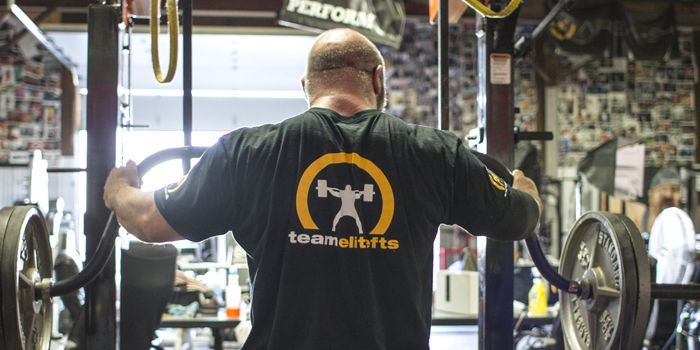
Fallacy. Noun. A mistaken belief, especially one based on unsound argument.
To gain size, you must sacrifice power.
A couple years ago, I started reading the work of Dr. Mike Israetel. He wrote mostly for powerlifting and bodybuilding, but I found a way to fit his principles into the training of power athletes. This was when the idea of phase potentiation was first introduced to me. For powerlifting, it went like this: first train to increase muscle size, and second, train to increase maximal strength. The result is better powerlifting performance.
The system is simple. If a powerlifter gets bigger in important muscles, he raises his potential for strength. For power athletes, Haff et al. [1] and DeWeese et al. [2] used the same system, with a third piece: train to optimize power development. The result of adding this third step is better explosive performance.
Phase potentiation works because size limits strength and strength limits power. By gaining muscle, you’re increasing your ceiling for strength. Then by getting stronger, you’re increasing your ceiling for power.
RELATED: Should I Lift or Should I Sprint — The Case for Power
It was springtime and I was working with college basketball athletes. I had a long off-season to run this system. I tested vertical jump (to estimate power and explosiveness) and we started a month-long hypertrophy (increase in muscle size) phase. We went about this by doing a few things:
- Training with compound and isolation exercises in higher rep ranges, up to 15 at 65-75% of 1RM intensities.
- Doing a lot of volume (sets x reps x weight), which means three to five sets were typically done for each exercise.
It was tough for them. They weren’t used to fatiguing/grinding hypertrophy training. But I wanted them to get bigger, and this was the best way to do it. At the end of the hypertrophy phase, I retested their vertical jumps. They had either no change or worse vertical jumps than before training.
Because of my obsession with phase potentiation, I attempted to justify what happened. I told the guys it was okay if they lost explosiveness. Hypertrophy training is high-rep and fatiguing — it directly opposes power development. I told them, "To gain size, you must sacrifice power." I continued to train athletes like this and thought there was no way around it. I knew they would get slower during hypertrophy training. Then I found intraset rest training (cluster training for hypertrophy) and everything changed.
To gain size, you don’t have to sacrifice power.
Building Muscle: The Mechanisms
Volume (amount of high quality work done) is king for hypertrophy gains. When volume is matched, gains in muscle size are similar regardless of the rep range and intensity used, as long as sets are taken to failure or near failure [3-12]. Do more volume, gain more size (if you’re recovering).
This begs the question: what is the best intensity and rep range to accumulate this high volume of training? The answer lies in the mechanisms of hypertrophy: a) mechanical tension and b) metabolic stress [13].
- Mechanical tension is the load lifted. Squatting 400 to a full range elicits greater mechanical tension than squatting 300 to a full range.
- Metabolic stress is the buildup of metabolites. This is the “burn” you feel in your muscles when you do a high rep set. One difficult repetition won’t accumulate a lot of metabolites, but 20 difficult repetitions will.
This is a constant battle. When mechanical tension is greatest, metabolic stress is lowest, and vice versa. This is because if you lift a maximal load, you can’t do many reps (TENSION, stress) and if you do a ton of reps, you can’t go heavy (tension, STRESS).
This is where the “hypertrophy range” comes in: sets of six to 15 repetitions balance out both mechanical tension and metabolic stress. In terms of intensity, this comes out to around 65-80% or your 1RM. This intensity allows for the high volume of training — it’s not too light to limit mechanical stress, but it’s not too heavy to be too fatiguing, thus limiting volume.
Hypertrophy is gained by pairing mechanical tension and metabolic stress, and doing so for a high volume.
It shouldn’t matter if you do four sets of 10 at 75% or you do 10 sets of four at 75%. If the volume and intensity are matched, the hypertrophy gains should be the same (in theory).
Hypertrophy Training: The Problem and The Solution
Over the course of a set, velocity of contraction decreases [14]. Because power is force, multiplied by velocity, this means power also decreases with each repetition. If your goal is to increase athletic power, training with less power at any given load is not optimal.
By doing fewer repetitions, power is maintained to a higher degree [15]. Take a typical hypertrophy set of 10 repetitions (followed by two to three minutes rest) at 70% 1RM on a back squat. As the set progresses, power consistently drops off.
To preserve power output, intraset rest (cluster sets) of 60-90 seconds can be added between repetitions. By training in this fashion and resting between repetitions or clusters of repetitions, power doesn’t experience such a drastic decrease [16-23]. You can achieve higher power outputs by training with cluster sets.
Cluster sets (compared to traditional sets) can also improve sustainability of mechanical performance [24] and increase quality of work [25]. And if you keep volume and intensity constant, you should see greater power gains.
This theory was put to the test in a study by Johnathon Oliver, et al [26].
Cluster Hypertrophy vs. Traditional Hypertrophy
First, I want to look at the "Greater Gains in Strength and Power with Intraset Rest Intervals in Hypertrophic Training." In this study, there were two groups of trained individuals. One did traditional hypertrophy training (four sets of 10 reps with two minutes rest) and the other group did cluster hypertrophy training (eight sets of five with one minute rest). Exercises, exercise order, days trained per week (4), intensity, and volume were matched between groups. Compound lifts (squats, deadlifts, presses, etc.) were done either cluster or hypertrophy. Assistance lifts (isolation exercises) were done in both groups at three sets of 10 with one and a half minutes rest.
Week 1 was done at 65%, Week 2 at 70%, Week 3 at 75%, and Week 4 was a deload. This was repeated three times for a total 12 weeks.
Outcomes of size, strength, and power were measured.
Results
No difference between groups in lean mass gained, total weight gained, or fat mass lost.
Bench Press 1RM
- Cluster: +13.7%
- Traditional: +9.2%
Back Squat 1RM
- Cluster: +51.1%
- Traditional: +43.1%
Bench Press Power
- Cluster: +15.0%
- Traditional: +6.1%
Back Squat Power
- Cluster: +46.9%
- Traditional: +36.8%
Vertical Jump Power
- Cluster: +11.1%
- Traditional: +7.2%
When intensity and volume are matched, cluster sets:
- Increase power to a greater degree
- Increase strength to a greater degree
- Result in similar lean mass gains
You get just as big as normal hypertrophy training, but you get stronger and more powerful. For power athletes, this is huge. You can enter your strength and power phases at a higher level of each, allowing for continued improvement above that achieved during normal hypertrophy training.
Cluster training can also increase size gains by allowing for higher volume of training. In a similar study, with a 70% back squat, subjects (trained and untrained) had to decrease load in their fourth set of traditional hypertrophy training. Cluster training did not; therefore they had a greater total volume load [18]. In another similar study, cluster sets produced significantly greater force, velocity, and power. Again, this allowed for the weight to be maintained through the sets where traditional had to decrease load to get repetitions in set four [19].
Cluster hypertrophy training leads to greater strength gains, greater power gains, and maybe greater size gains.
How to Hypertrophy Train with Clusters
For your compound exercises (squats, presses, pulls, and deadlifts), don't do four sets of 10 at 65-75%. Instead, do eight sets of five with 65-75% 1RM and one minute of rest.
Don’t use it for isolation work such as curls, dips, delt raises, calf raises, back extensions, etc., because cluster training doesn’t work well with these (localized metabolite buildup seems important for isolation exercises). Instead, do these at a variety of rep ranges to stimulate different pathways that affect hypertrophy [27], which may lead to better size gains [5]. This is where sets of fewer than five and greater than 20 should be used, but most volume should come from the six to 15 range.
If you want to gain muscle, you don’t have to sacrifice power. Hypertrophy cluster training is a simple fix to optimize your athletic development — simultaneously building muscle, strength, and explosiveness.
References
- Haff, G. G. & Nimphius, S. (2012). Training principles for power. Strength and Conditioning Journal, 34(6), 2-12.
- DeWeese, B. H., Hornsby, G., Stone, M., & Stone, M. H. (2015). The training process: Planning for strength-power training in track and field. Part 2: Practical and applied aspects. Journal of Sport and Health Science, 4(4), 318-24.
- Morton, R. W., Oikawa, S. Y., Wavell, C. G., Mazara, N., McGlory, C., Quadriletero, J., Baechler, B. L., Baker, S. K., & Phillips, S. M. (2016). Neither load nor systemic hormones determine resistance training-mediated hypertrophy or strength gains in resistance-trained young men. Journal of Applied Physiology (Bethesda, Md. : 1985), 121(1), 129-38.
- Fink, J., Kikuchi, N., Yoshida, S., Terada, K., & Nakazato, K. (2016). Impact of high versus low fixed loads and non-linear training loads on muscle hypertrophy, strength and force development. SpringerPlus 2016, 5(698), DOI: 10.1186/s40064-016-2333-z.
- Schoenfeld, B. J., Contreras, B., Ogborn, D., Galpin, A., Krieger, J., & Sonmez, G. T. (2016). Effects of varied versus constant loading zones on muscular adaptations in trained men. International Journal of Sports Medicine, 37(6), 442-7.
- Schoenfeld, B. J., Ratamess, N. A., Peterson, M. D., Contreras, B., Sonmez, G. T., & Alvar, B. A. (2014). Effects of different volume-equated resistance training loading strategies on muscular adaptations in well-trained men. Journal of Strength and Conditioning Research, 28(10), 2909-18.
- Campos, G. E, Luecke, T. J., Wendeln, H. K., Toma, K., Hagerman, F. C., Murray, T. F., Ragg, T. F., Ratamess, N. A., Kraemer, W. J., & Staron, R. S. (2002). Muscular adaptations in response to three different resistance-training regimens: specificity of repetition maximum training zones. European Journal of Applied Physiology, 88(1-2), 50-60.
- Mitchell, C. J., Churchward-Venne, T. A., West, D. W., Burd, N. A., Breen, L., Baker, S. K., & Phillips, S. M. (2012). Resistance exercise load does not determine training-mediated hypertrophic gains in young men. Journal of Applied Physiology (1985), 113(1), 71-77.
- Van Roie, E., Delecluse, C., Coudyzer, W., Boonen, S., & Bautmans, I. (2013). Strength training at high versus low external resistance in older adults: effects on muscle volume, muscle strength, and force-velocity characteristics. Experimental Gerontology, 48(11), 1351-61.
- Schoenfeld, B. J., Peterson, M. D, Ogborn, D., Contreras, B., & Sonmez, G. T. (2015). Effects of low- vs. high-load resistance training on muscle strength and hypertrophy in well-trained men. Journal of Strength and Conditioning Research, 29(10), 2954-63.
- Klemp, A., Dolan, C., Quiles, J. M., Blanco, R., Zoeller, R. F., Graves, S., & Zourdos, M. C. (2016). Volume-equated high- and low-repetition daily undulating programming strategies produce similar hypertrophy and strength adaptations. Applied Physiology, Nutrition and Metabolism, 41(7), 699-705.
- Ogasawara, R., Loenneke, J. P., Thiebaud, R. S., & Abe, T. (2013). Low-load bench press training to fatigue results in muscle hypertrophy similar to high-load bench press training. International Journal of Clinical Medicine, 4(2), 114-121.
- Schoenfeld, B. J. (2010). The mechanisms of muscle hypertrophy and their application to resistance training. Journal of Strength and Conditioning Research, 24(10), 2857-72.
- Izquierdo, M., González-Badillo, J. J., Häkkinen, K., Ibáñez, J., Kraemer, W. J., Altadill, A., Eslava, J., Gorostiaga, E. M. (2006). Effect of loading on unintentional lifting velocity declines during single sets of repetitions to failure during upper and lower extremity muscle actions. International Journal of Sports Medicine, 27(9), 718-24.
- Luis Sánchez-Medina, L. & González-Badillo, J. J. (2011). Velocity loss as an indicator of neuromuscular fatigue during resistance training. Medicine and Science in Sports and Exercise, 43(9), 1725-34.
- Haff, G. G., Whitley, A., McCoy, L. B., O’Bryant, H. S., Kilgore, J. L., Haff, E. E., Pierce, K., & Stone, M. H. (2003). Effects of different set configurations on barbell velocity and displacement during a clean pull. Journal of Strength and Conditioning Research, 17(1), 95-103.
- Lawton, T. W., Cronin, J. B., & Lindsell, R. P. (2006). Effect of interrepetition rest intervals on weight training repetition power output. Journal of Strength and Conditioning Research, 20(1), 172-6.
- Oliver, J. M., Kreutzer, A., Jenke, S., Phillips, M. D., Mitchell, J. B., & Jones, M. T. (2015). Acute response to cluster sets in trained and untrained men. European Journal of Applied Physiology, 115(11), 2383-93.
- Oliver, J. M., Kreutzer, A., Jenke, S. C., Phillips, M. D., Mitchell, J. B., & Jones, M. T. (2016). Velocity drives greater power observed during back squat using cluster sets. Journal of Strength and Conditioning Research, 30(1), 235-43.
- Oliver, J. M., Jenke, S. C., Mata, J. D., Kreutzer, A., & Jones, M. T. (2016). Acute effects of cluster and traditional set configurations on myokines associated with hypertrophy. International Journal of Sports Medicine, 37(13), 1019-24.
- Hansen, K. T., Cronin, J. B., Newton, M. J. (2011). The effect of cluster loading on force, velocity, and power during ballistic jump squat training. International Journal of Sports Physiology and Performance, 6(4), 455-68.
- Tufano, J. J., Conlon, J. A., Nimphius, S., Brown, L. E., Seltz, L. B., Williamson, B. D., Haff, G. G. (2016). Maintenance of velocity and power with cluster sets during high-volume back squats. International Journal of Sports Physiology and Performance, 11(7), 885-92.
- Hardee, J. P., Triplett, N. T., Utter, A. C., Zwetsloot, K. A., & Mcbride, J. M. (2012). Effect of interrepetition rest on power output in the power clean. Journal of Strength and Conditioning Research, 26(4), 883-9.
- Iglesias-Soler, E., Carballeira, E., Sánchez-Otero, T., Mayo, X., & Fernández-del-Olmo, M. (2014). Performance of maximum number of repetitions with cluster-set configuration. International Journal of Sports Physiology and Performance, 9(4), 637-42.
- Denton, J. & Cronin, J. B. (2006). Kinematic, kinetic, and blood lactate profiles of continuous and intraset rest loading schemes. Journal of Strength and Conditioning Research, 20(3), 528-34.
- Oliver, J. M., Jagim, A. R., Sanchez, A. C., Mardock, M. A., Kelly, K. A., Meredith, H. J., Smith, G. L., Greenwood, M., Parker, J. L., Riechman, S. E., Fluckey, J. D., Crouse, S. F., & Kreider, R. B. (2013). Greater gains in strength and power with intraset rest intervals in hypertrophic training. Journal of Strength and Conditioning Research, 27(11), 3116-31.
- Burd, N. A., West, D. W.., Staples, A. W., Atherton, P. J., Baker, J. M., Moore, D. R., Holwerda, A. M., Paris, G., Rennie, M. J., Baker, S. K., & Phillips, S. M. (2010). Low-load high volume resistance exercise stimulates muscle protein synthesis more than high-load low volume resistance exercise in young men. PLoS One, 5(8), e12033.
Jake is a collegiate strength and conditioning coach and powerlifter. He has been training athletes for the last seven years to reach their physique and performance goals. Check out his website at www.thejackedathlete.com.









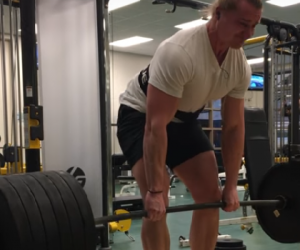

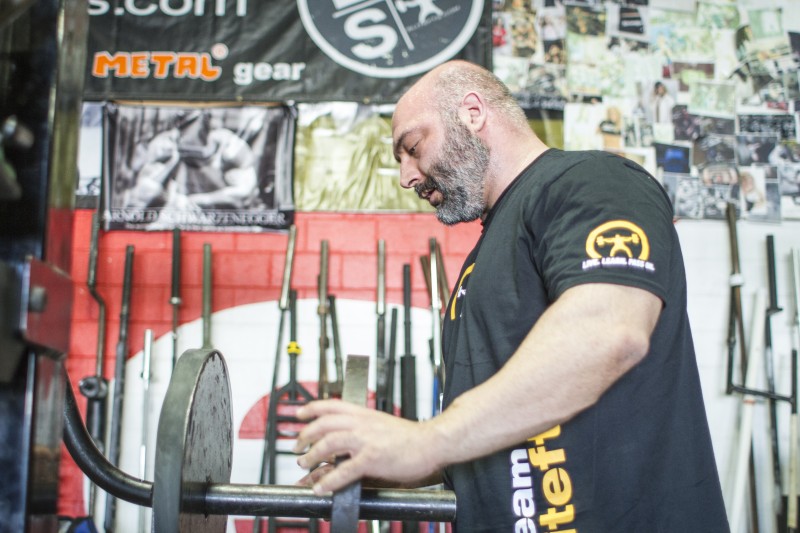
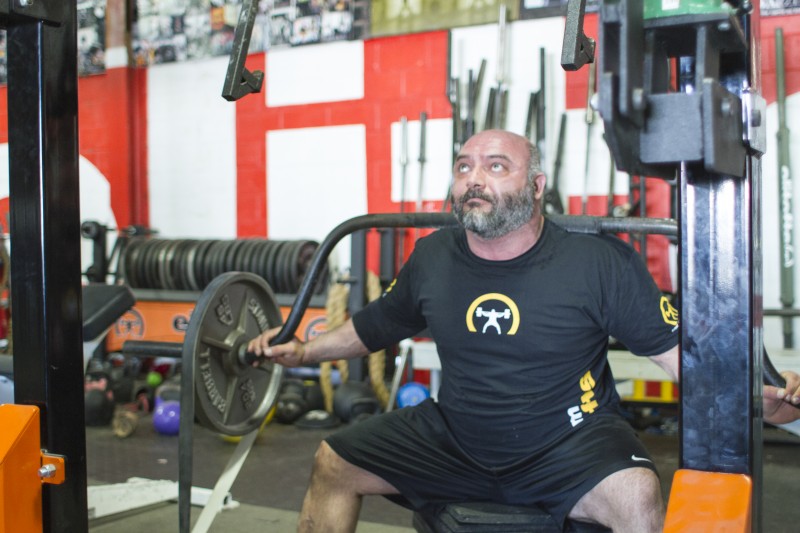
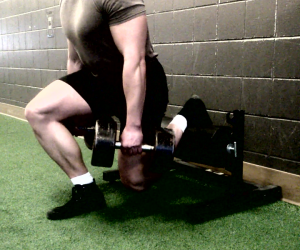
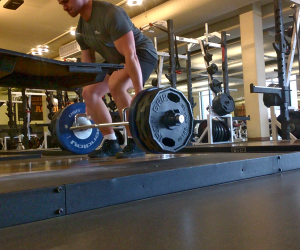

rob - You'd have to experiment to see what works best. For new trainees, it could be a way to keep quality of repetitions high. However, with any percentage-based program, a novice's max will change often (so maybe a slight progressive overload can be used session to session). Also, novices may not need a full 60 seconds of rest between these sets because they will be lifting such light weights (assuming they are relatively weaker). This is speculation as I haven't trained any newbies on this type of template. Try it out and let me know how it goes
Thx,
Jeff
Keep in mind, quarter squats are probably best used on a strength or power phase. In regards to "hypertrophy cluster training", I might not use them as full ROM generally leads to better results (for hypertrophy) than does partial ROM.
Also, if you don't have a belt squat or if you don't want to axially load an athlete with 500+ lbs., I would recommend they get really strong at high-handle trap bar deadlifts. In most athletes, this pretty much hits the joint-angle that a quarter squat hits.